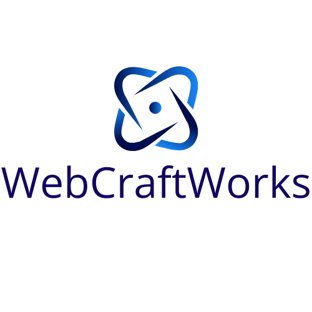🧠 The Deep Evolution of Web Design in 2025: UX, AI, and Ethical Interactivity
As the digital landscape matures, 2025 marks a critical evolution in how websites are built, experienced, and judged. Today’s web design is no longer just about how it looks, but how it adapts, performs, and guides behavior—all while being ethically responsible, inclusive, and lightning-fast.
5/5/20252 min read
1. Cognitive UX: Designing for Attention and Memory
Modern websites are grounded in cognitive psychology principles. Interfaces must align with how users perceive, process, and retain information.
Hick’s Law: Fewer choices = faster decisions. Navigation menus are being stripped to essentials to reduce decision paralysis.
F-pattern and Z-pattern layouts still dominate reading behavior, especially in desktop.
Progressive Disclosure: Only revealing information as needed helps reduce cognitive load, increasing task completion rates.
📊 Sites using cognitive-focused UX design report 36% lower bounce rates and 18% higher task completion. (NNGroup, 2025)
2. AI-Personalized Experiences at Scale
In 2025, web design is dynamically adaptive. AI is used not only for chatbots and product suggestions but to restructure entire layouts based on:
User’s browsing history
Device type
Interaction heatmaps
Regional behavior differences
For example, eCommerce stores use AI to auto-reorder product categories based on time of day and user intent.
🧠 Personalized web experiences result in a 63% higher ROI vs static websites. (Salesforce Research, 2025)
3. Behavioral Design & Persuasion Tactics
Persuasive design is used to influence behavior ethically:
Urgency and Scarcity (e.g., “Only 3 left” or countdown timers)
Social Proof (e.g., reviews, live purchases)
Commitment/Consistency (e.g., progress bars for forms)
Ethical use is key. Overuse triggers distrust—this is the "dark pattern backlash" era.
⚖️ 52% of users now abandon checkout if they detect manipulative design patterns. (Baymard Institute, 2025)
4. Inclusive & Accessible-First Design
Accessibility isn’t a bolt-on—2025 design systems start with it:
Voice navigation interfaces for impaired users
Color contrast enhancements (WCAG 2.2 AA minimum)
Focus indicators and keyboard-only navigation
Language switching + localized content (for global UX)
♿ Fully accessible websites capture up to $13B in untapped spending from users with disabilities. (W3C Global Web Report)
5. Motion as Feedback, Not Distraction
Animations are now functional, not decorative. Instead of flashy intros:
Buttons subtly animate on hover to imply interactivity
Loading indicators use micro-animations to show progress
Scroll-triggered effects tell the story (parallax + motion reveals)
🌀 Websites that balance motion with UX report 2.6x longer dwell time. (CrazyEgg)
6. Sustainable & Ethical Web Architecture
Eco-friendly design goes beyond green hosting:
Lightweight frameworks (e.g., Astro, Eleventy)
Reduced DOM complexity (faster rendering = less CPU)
Font-subsetting and media lazy loading
Carbon calculators for web emissions are now being used by agencies
🌱 The average website emits ~1.76g CO2 per pageview; 10k visitors = 17.6kg. Lighter sites reduce this by 60–80%.(WebsiteCarbon.com, 2025)
7. No-Code/Low-Code Design Systems
With platforms like Webflow, Framer, and Builder.io maturing, visual-first dev is becoming standard even in enterprise:
Designers and marketers can build real-time prototypes
Components follow design tokens from shared systems
Speeds up deployment and testing dramatically
💡 Low-code tools reduce production time by 67% compared to traditional dev. (Forrester, 2025)
🔮 2025 Takeaway: Web Design Is Strategic Infrastructure
In 2025, your website is no longer just a brand expression—it's a living, adapting, AI-powered ecosystem that:
Adapts to users in real-time
Predicts behavior using psychology and data
Optimizes itself for global, inclusive access
Runs lean for speed and sustainability
The future of web design lies in balance: performance + empathy, intelligence + ethics, automation + creativity.
Contact
contact@webcraftworks.com
Subscribe to our newsletter
phone 407-574-9130
©2024-2025 WebCraftWorks | All Rights Reserved
